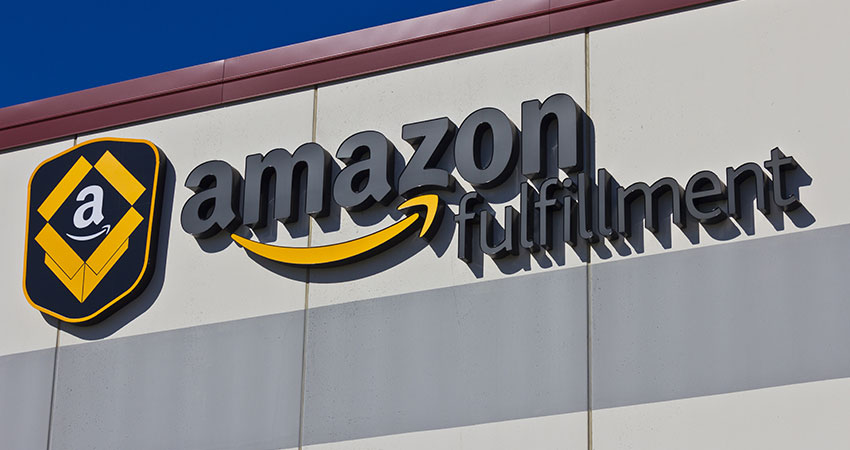These days, Fulfillment By Amazon (FBA), the service provided by the ecommerce giant, is a hot topic within the ecommerce world. Just ask Jason Aymerich, president of third-party logistics (3PL) provider Complemar. Aymerich said the company receives four or five calls a day from merchant companies looking for alternatives to FBA.
However, FBA remains very popular among Amazon sellers, with over 650,000 using it in the U.S. as of 2018, according to Marketplace Pulse, representing 67% of all domestic sellers.
So then clearly, FBA isn’t broken, but it’s not the solution for everyone either. How do you know if an FBA strategy makes sense for your merchant company?
Aymerich, along with Darren Lane, B2B ecommerce sales manager for auto parts seller Motor City Distributing, and Peter Marlenga, director of operations for screen protector seller Tech Armor, discussed the pros and cons of FBA at this year’s Ecommerce Operations Summit.
It’s Great for High Velocity, Low Value Products
The panelists all agreed that FBA wins on its simplicity, ease of getting started and quick product fulfillment. However, if you have a large number of SKUs that are slow-moving products, FBA can get very expensive very quickly.
You may also look elsewhere if you want more control over customer data, as FBA restricts your ability to remarket to buyers.
Expect Higher Storage Rates, Especially for Long Term
Along with its massive growth Amazon is facing space constraints, but it also benefits from incentivizing higher product turnover. If you currently have small items sitting around for over six months, your rates are already up 1,000%, according to the panel, and more than likely they’re only going to increase.
Rates are one of the biggest challenges of FBA. Make sure to account for steady increases in your FBA budget, and consider both storage and shipping fees in your calculations.
Constantly Monitor Amazon’s Changing Policies
Amazon is always changing the kinds of items it’s willing to fulfill. Without a backup plan, you could suddenly find yourself with the rug pulled out from under you.
You also need to keep a close eye on your supply chain. Retaining control over your brand will allow you maintain a higher margin, even if Amazon squeezes you on costs.
3PLs Can Provide Value-Added Services
This can include things like flexibility with package prep. For example, Complemar fulfilled online Girl Scout cookie orders, and added a feature where customers could mix and match custom boxes. This would be virtually impossible with FBA.
With Amazon, your packages need to be ready to go by the time they hit the FBA warehouse. Any labeling, secondary packaging, etc. needs to be done beforehand.
Ideally, you want to leave your products in their most basic form, then kit them together as needed. This isn’t really an option with FBA, where you have very limited ability to respond to changing demand.
Limit New Product Storage Until After Initial Sales
Tech Armor normally sells 90% of its products on Amazon, so they send 90% to FBA storage. However, there’s a higher risk of failure with new products, so the company first splits product 50-50, then move it from their warehouse to FBA after they see how it performs.
If Feasible, Retain an FBA Account Manager
True, these days it’s harder to get high-quality support. However, at least you’ll have a dedicated point person who can direct you to the appropriate expert. While you may not get much value from them, an account manager will reduce frustration for you and your team.
Consider Amazon’s Buy Shipping Integration
This is a must if you use Self-Fulfilled Prime program. Amazon’s buy shipping services allow you to buy shipping labels individually or in bulk, ship and confirm your orders, and track your shipments. It also taps a network of carrier partners. The buy shipping integration is a great way to take advantage of some of Amazon’s features without committing to full FBA.
Sync with Sales/Marketing on Ranking Before Bailing
How important it is for your product to be highly ranked, particularly for Amazon Prime? It’s hard to quantify exactly what impact FBA has on your ranking, but you need to be ready to take a hit if you move away.
Give Your 3PL a Returns Matrix Based on SKU Type, Value
Make it clear what your 3PL should do with any returned product in any condition. Also require them to disposition your product at least weekly so you stay on top of your returned inventory.
For example, if you sell dietary supplements, your 3PL should know to destroy a returned product only if it’s been opened. Unopened products should be put back into the supply chain.

